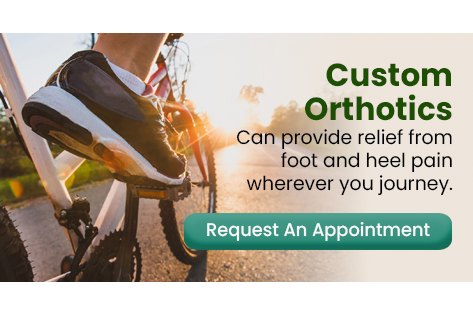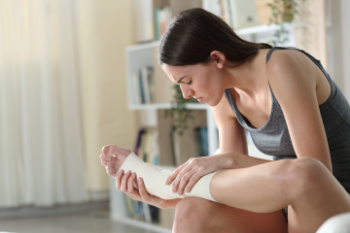
An ankle sprain happens when the ligaments that support the joint stretch beyond their limit, often from a sudden twist, misstep, or uneven surface. Many people feel an immediate sharp pain followed by swelling, tenderness, or bruising around the outside of the ankle. Putting weight on the foot may become difficult, and the joint can feel unstable or weak. Even mild sprains can linger if they are ignored, leading to repeated injuries and long-term stiffness. Early care, including rest and proper support, helps the ligaments heal in a stable position and reduces the chance of chronic instability. Paying attention to discomfort during walking or exercise can prevent the injury from worsening. If ankle swelling, pain, or instability continues, it is suggested that you schedule an appointment with a podiatrist for a proper evaluation and guidance.
Although ankle sprains are common, they aren’t always minor injuries. If you need your ankle injury looked at, contact Joseph M. LaCava, DPM from Arkansas. Our doctor can provide the care you need to keep you pain-free and on your feet.
How Does an Ankle Sprain Occur?
Ankle sprains are the result of a tear in the ligaments within the ankle. These injuries may happen when you make a rapid shifting movement while your foot is planted. A less common way to sprain your ankle is when your ankle rolls inward while your foot turns outward.
What Are the Symptoms?
- Pain at the sight of the tear
- Bruising/Swelling
- Ankle area is tender to touch
- In severe cases, may hear/feel something tear
- Skin discoloration
Preventing a Sprain
- Wearing appropriate shoes for the occasion
- Stretching before exercises and sports
- Knowing your limits
Treatment of a Sprain
In many cases, the RICE method (Rest, Ice, Compression, and Elevate) is used to treat ankle sprains. However, you should see a podiatrist to see which treatment option would work best with your injury. In severe cases, surgery may be required.
It is important to ask your doctor about rehab options after you receive treatment for your injury. Stretching, strength training, and balance exercises may help the ankle heal while also preventing further injury.
If you have any questions, please feel free to contact our office located in Hot Springs, AR . We offer the newest diagnostic and treatment technologies for all your foot care needs.

Step into relief and reclaim your mobility! Foot and heel pain can be a thing of the past with the right Custom Orthotics. Customized to your unique foot structure, they provide the support and alignment needed to alleviate discomfort. Whether you're walking, running, or simply standing, Custom Orthotics ensure every step is cushioned and pain-free. Don't let foot ailments dictate your day. With Custom Orthotics, embrace a world of comfort and freedom. Call today to schedule an appointment.

A hairline fracture is a very small break in a bone that can cause significant discomfort, even though it may not be obvious at first. Many people notice a gradual increase in pain during walking or standing, especially after repetitive activity. Swelling, tenderness, and mild bruising may appear, and the discomfort often improves with rest but quickly returns with movement. These tiny cracks commonly develop from overuse, wearing improper footwear, or sudden increases in activity levels. Without early attention, the injury can worsen and interfere with mobility. Recognizing the signs promptly helps protect long-term foot health and supports a smoother recovery. If you notice persistent soreness, swelling, or pain that intensifies with activity, it is suggested that you schedule an appointment with a podiatrist for a proper diagnosis and appropriate treatment.
Activities where too much pressure is put on the feet can cause stress fractures. To learn more, contact Joseph M. LaCava, DPM from Arkansas. Our doctor can provide the care you need to keep your pain free and on your feet.
Dealing with Stress Fractures of the Foot and Ankle
Stress fractures occur in the foot and ankle when muscles in these areas weaken from too much or too little use. The feet and ankles then lose support when walking or running from the impact of the ground. Since there is no protection, the bones receive the full impact of each step. Stress on the feet can cause cracks to form in the bones, thus creating stress fractures.
What Are Stress Fractures?
Stress fractures occur frequently in individuals whose daily activities cause great impact on the feet and ankles. Stress factors are most common among:
- Runners
- People affected with Osteoporosis
- Tennis or basketball players
- Gymnasts
- High impact workouts
Symptoms
Pain from the fractures occur in the area of the fractures and can be constant or intermittent. It will often cause sharp or dull pain with swelling and tenderness. Engaging in any kind of activity which involves high impact will aggravate pain.
If you have any questions please contact our office located in Hot Springs, AR . We offer the newest diagnostic and treatment technologies for all your foot and ankle needs.

